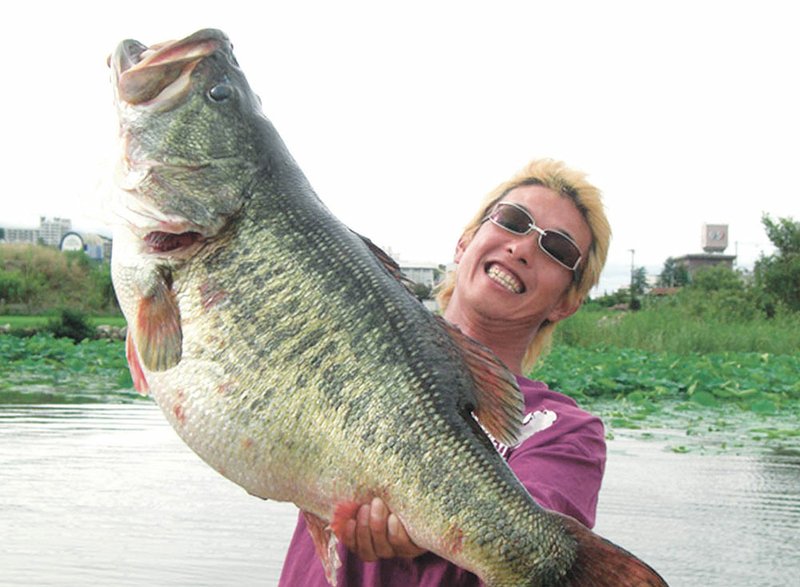On July 2, 2009, when it was announced that Manabu Kurita had caught a 22-pound, 4-ounce largemouth that tied George Perry’s 1932 all-tackle world record, and had caught the astoundingly huge fish not in the United States, but in a Japanese lake, a lot of American bass anglers were puzzled. A friend of mine said what was on the minds of many: “A world-record bass in Japan? I didn’t even know they had bass in Japan.”
Here’s another bit of bass trivia unknown to many. Largemouth bass have been exported to at least 61 countries. And many of these introductions began back in the nineteenth century.
Originally, largemouth bass were found only in the eastern United States, parts of southern Canada and perhaps parts of northern Mexico. But since the late 1800s, their range has expanded to include portions of every state in the U.S. except Alaska. Largemouths are now available to more U.S. anglers than any other species of fish.
According to FishBase.org, a worldwide web electronic publication full of interesting scientific data about fishes, Belgium and France were probably the first foreign countries where largemouths were stocked. Bass were exported to those countries in 1877. England got largemouths in 1879, Germany in 1888 and Italy in 1897.
The first South American fish were stocked in Brazil in the early 1900s. And more American bass were exported to Argentina, Bolivia and Colombia.
In 1907, the Philippines became the first Asian nation to get bass. Largemouths made it to Japan and Hong Kong in 1925, to Fiji in 1962 and to Korea in 1963.
Africa received its first stockings in 1928 when bass from the Netherlands were stocked in South Africa and bass from the U.S. were stocked in Kenya.
Hawaii received its first imports in 1897, 62 years before it became a U.S. state. Among the many island nations to receive largemouths were Cuba (1928), Puerto Rico (1946) and Madagascar (1951).
Soon, the countries where bass had been introduced were introducing bass to their neighbors. European countries started stocking other European countries. African nations stocked other African nations.
Fish from Germany, for example, were stocked in Poland, Finland, Denmark, Hungary and Austria. South African largemouths spread to Zimbabwe, Namibia, Lesotho and Botswana.
And the U.S. continued exporting bass to countries around the world.
The trend continued throughout the 1950s, 1960s, 1970s and 1980s, with largemouths finding new homes in Panama, Spain, Cyprus, Russia and many more countries. In all, at least 61 countries have received exports of North America’s favorite sportfish.
Largemouths didn’t thrive everywhere they were stocked, and you may be surprised to learn they weren’t welcomed everywhere they did thrive either. Introduced bass have, in some places, affected populations of native fishes through predation, sometimes resulting in the decline or extinction of such species. In some lakes, introduced largemouths wiped out all the native fish that had previously existed.
Here’s another fact I found rather astounding. Largemouth bass are on the list of “100 of the World’s Worst Invasive Alien Species” created by the New Zealand based Invasive Species Specialist Group (ISSG), a branch of the World Conservation Union. According to the ISSG, alien invasion is second only to habitat loss as a cause of species endangerment and extinction. And the largemouth bass is among the worst alien invaders. Other species in the top 100 list include the feral pig, Indian mongoose, zebra mussel, house cat, gypsy moth, kudzu, black rat, European starling, fire ant, avian malaria, Asian tiger mosquito and common carp. I had no idea bass kept such company.
In some countries — Japan, for example — wars have been waged between bass fishermen who consider largemouths desirable and other groups who contend bass are alien nuisances that should be eliminated before they further damage fragile ecosystems. Ol’ Micropterus salmoides is no more highly regarded in some areas than snakehead fish are in American waters.
In an interview with the Los Angeles Times, Minuro Sato, the director of Japan’s National Federation of Fisheries Cooperative Association, said, “Japanese bass fishing is a ‘dark fishing’ and cannot be called a sport. Bass anglers are very bad mannered — parking a car on a plowed field, interrupting traffic, cutting off lures if gotten caught in fishing nets. It is a lawless situation regarding a foreign fish.”
Those words express the feelings of many foreign nationals toward largemouth bass. Nevertheless, there still are many exotic destinations where an angler can try his hand at catching these popular sportfish. These include Moncoutant, a fishing-oriented center in France, which encompasses 250 acres of bass waters; Lake Caspe, Spain, site of the 2004 European Bass Classic; lakes Odeleite, Beliche, Funcho and Santa Clara in southern Portugal; Midmar and Inanda Dams, South Africa; Darwendale Lake in Zimbabwe, which produced an 18-pound, 4-ounce largemouth in July 2004; Lake Ait Aadel in Morocco; Lucchetti and Guajataca reservoirs in Puerto Rico; and lakes Caliraya and Lumot in the Philippines.
And, of course, let’s don’t forget Japan’s Lake Biwa where Manabu Kurita caught his 22-pound, 4-ounce largemouth, a tie for the world record. In the years since Kurita landed this extraordinary bass, this lake in the Shiga Prefecture near Kyoto has become one of the world’s top destinations for bass anglers.
Largemouths may not be welcome introductions everywhere, but isn’t it interesting to know that the most popular sportfish in America can now be found not just in the eastern U.S., but throughout the world?
